Press release 2020-08-11 at 10:09
Approximately 25,760 cormorant nests were counted in the Finnish coastal areas in the summer of 2020. In the past five years, the nesting population has varied by only a few per cent. However, there is wide regional variation in the number of nests annually and the effect of hunting by the white-tailed eagle on nesting success and the locations of the colonies is increasing.
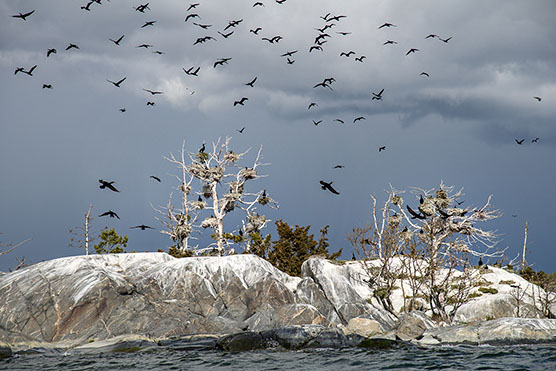
Cormorant colonies in the Archipelago Sea. Photo Riku Lumiaro.
One third of the cormorant nests were found in both the Gulf of Finland and the Bothnian Sea, one fifth in the Archipelago Sea, 12% in Kvarken and 5% in the Bothnian Bay. In Kvarken, the population declined by 16%, in the Archipelago Sea by 14% and in the Gulf of Finland by two per cent, while it increased by 70% in the Bothnian Bay and by 17% in the Bothnian Sea.
All in all, the cormorant population in the Gulf of Bothnia increased by 10% to approximately 12,200 nests, with 7,660 located in the Bothnian Sea, 3,200 in Kvarken and 1,360 in the Bothnian Bay. In the Gulf of Finland, the population comprised approximately 8,500 nests and in the Archipelago Sea, 5,000 nests.
The largest communities are between Porvoo and Mustasaari
Fifty-four cormorant colonies were observed in Finland on 83 islets or islands over an area totalling 81 hectares. More than half of the entire population nested in the eight largest colonies.
Colonies of more than one thousand nests were located in Rauma (3,600 nests), Mustasaari (1,560), Turku (1,540), Uusikaupunki (1,540), Porvoo (1,320), Pori (1,320), Kirkkonummi (1,300) and Eurajoki (1,170). The strongest increase at the municipal level was observed in Rauma and Kokkola, while in Nykarleby, the number of nests declined by more than a half.
Ten colonies from the previous year were abandoned and 11 new colonies were observed: in Virolahti (2), Loviisa (3), Salo (2), Pargas, Pori, Kokkola and Lumijoki. Cormorants also nested in Vaasa and Kotka after a break of one year. The colony in Pori had settled to nest at a small lake inhabited by a variety of birds near the coast. Successful nesting in inland areas has not previously been observed in Finland.
More than 400 cormorant nests with eggs were found to have been illegally destroyed on three treeless islets in Pyhtää and Hamina. As a result, new nests were built on forested islets in the inner archipelago, closer to areas with summer houses.
White-tailed eagle increasingly hunts in cormorant colonies
Hunting by the white-tailed eagle continued to increase, weakening the fledgling production even in large nesting colonies. As a result, the number of adult cormorants returning to their area of birth is relatively lower. Hunting by the white-tailed eagle also affects the locations of the colonies and their way of nesting: nesting is increasingly concentrated in the inner archipelago and the proportion of nesting in forests is growing.
In the oldest colony in Kvarken, the almost 20-year-old colony in Nykarleby, few nestlings grew up to learn to fly, as more than 30 white-tailed eagles at the most were sighted preying on the nesting islet. Also, in the border zone in the eastern Gulf of Finland, the failure of nesting on at least three islets was interpreted to have been caused by white-tailed eagles before the eggs had hatched.
More than 80 people participated in the searches, checks and calculations of cormorant colonies in the summer of 2020.
Number of cormorant nests 2011–2020
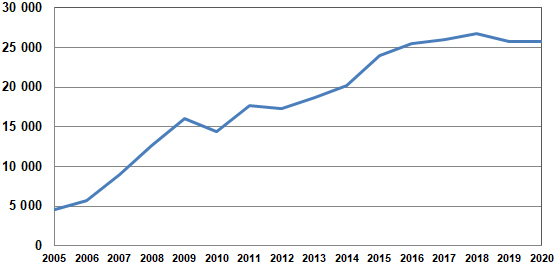
SYKE
Percentage increase in the cormorant population 2011–2020
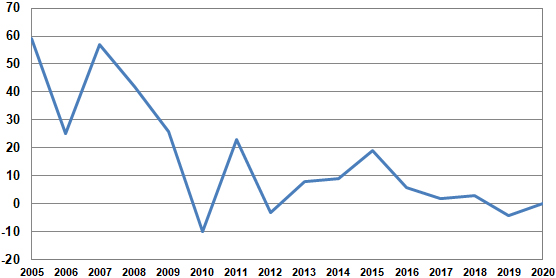
SYKE
Cormorant monitoring is conducted to collect basic information about the ecology and spreading of the species in Finland. The cormorant is protected in Finland throughout the year under the Nature Conservation Act, and it is not on the EU's list of huntable species.
Number of cormorant nests by sea area in 2011–2020
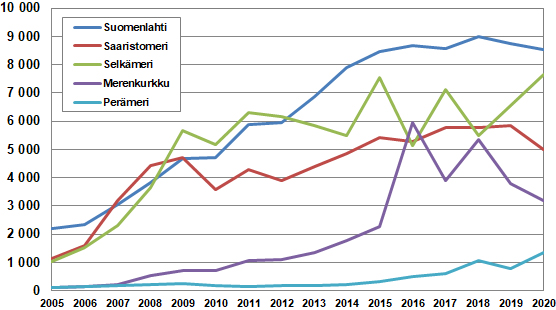
SYKE
Number of cormorant nests by region in 2020
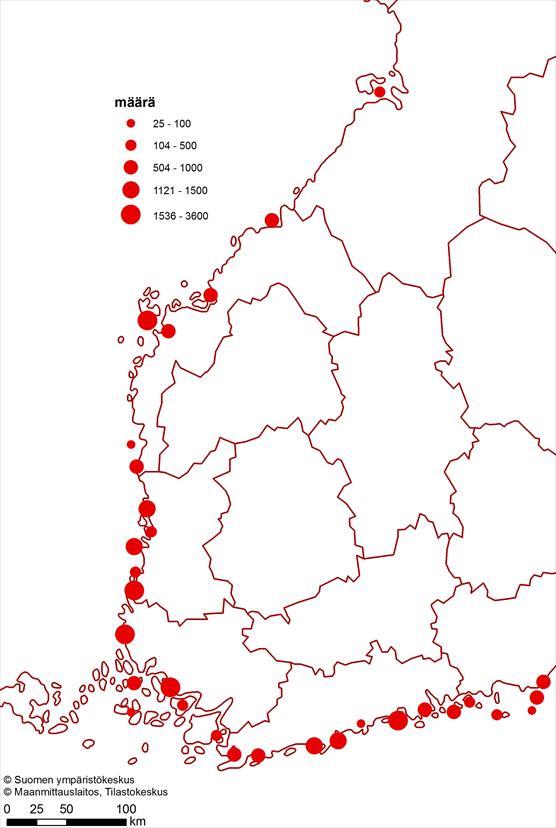
SYKE
Further information
Pekka Rusanen, Researcher, Finnish Environment Institute SYKE,
tel. +358 400 148 691, firstname.lastname@ymparisto.fi
Markku Mikkola-Roos, Senior Specialist, Finnish Environment Institute SYKE,
tel. +358 400 148 685, firstname.lastname@ymparisto.fi